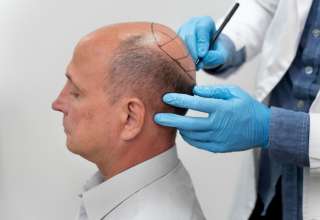Arts in health also mentioned as arts in medicine or art in healthcare may be a multidisciplinary field dedicated to transforming the healthcare experience through the humanities. It includes creative expressions such as literary, performing arts, visual arts, design, and others into a health care or community setting to improve the health and well-being of individuals.
It recognizes the role of art, creativity, and participation in developing and maintaining health at the community level. It also includes specific hospital-based programs in which professional artists facilitate bedside activities, exhibitions, or live performances. Also, it is scaled up to the community level to incorporate community-based health programs and to promote health and wellness.
Arts in medicine has been applied to a vast array of health issues such as- Post-traumatic stress disorder, Alzheimer’s, dementia, neurological disorders, brain injuries, and physical disabilities to improve upon the patient’s overall health, treatment, and quality of life. A rich and growing body of research shows the improved quality of care for the patients, family members, and even the medical staff.
Art And Healthcare Connection
The creative art therapies began around the 1930s in the United States. Creative arts therapists used distinct art-based and creative methods to improve disability and illness and optimize their health and well-being. Arts in health began around the 1970s when professional artists were trained in promoting healthcare. Arts in Public health has emerged as another discipline where healthcare of the entire population is addressed through health care and prevention.
The purpose of art in healthcare is to humanize the healing process. Humanizing the process means treating a person’s mind, body, and soul. To lift the spirits of a person, art is used as a creative process that provides joy, relaxation, and comfort to them. This same principle is applied to the patients, and that is how art and healthcare work in unison.
According to studies, the use of arts also has a financial benefit, leading to shorter hospital stays, less medication, and fewer complications. Integrating arts into the healthcare setting helps cultivate a healing environment for the patient’s physical, emotional and mental health. It also fosters a positive environment for the caregivers that eventually reduce stress and improve workplace satisfaction.
Artists in Residence
The primary purpose of an artist in residence is to uplift the whole person – the body, mind, and spirit, while they are receiving their healthcare. An artist in residence facilitates the creative process by making art. An artist in residence aims to bring joy, happiness, communication, and meaning through the creative process of making art.
Artists in residence are not counselors or therapists but are professionals in their respective fields. It is also different from music therapy, dance therapy, drama therapy, poetry therapy, or art therapy. The artist is not present to uncover any previous trauma, change behaviors or diagnose the problems. He/she just has one single aim that is to facilitate the creative process through art-making.
Prevalence Of Arts In Healthcare Programs
An increasing number of clinicians and healthcare professionals are working with arts professionals to improve their healthcare experience. Around the world, art is emerging as an essential component of healthcare. Nearly half of the medical institutions in the United States offer art in healthcare programs. These primarily include permanent art displays, performances in public spaces, and bedside activities.
The use of visual arts in the building allows for a better scenic and ambient environment for the patients. Art making and music is brought to the patient’s bedside to improve upon his overall well-being by engaging him in a creative process. Organizing performances in the waiting room to lift the spirits of family members present and patients waiting for their turn allows them to feel good about their environment.
Area Of Focus
- Patient Care – The incorporation of arts and healthcare has a positive outcome on the patient’s health by aiding in their physical, mental, and emotional recovery.
- Healthcare Environments – The arts create a more supportive and functional healthcare facility. The physical environment has a significant impact on health outcomes as it reduces patients and caregiver stress, enhancing patient safety and overall quality of healthcare.
- Caring For Caregivers – Art creates a more normative environment and allows the caregivers an opportunity for creativity and self-expression.
- Community Well-Being – More people are engaged in arts programs aimed at promoting prevention and wellness activities.
Conclusion
The use of art in medicine is growing as healthcare is being humanized. Research and study findings back the use of arts in creating a healing environment.











